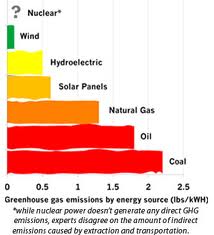Although the process of hydraulic fracturing is relatively new, U.S. companies have been drilling vertically for natural gas to use as an energy source for quite some time. The first attempts at natural gas extraction in the United States began as early as 1825 (McGraw 32). Over time, drilling technologies evolved and developed. Today, hydraulic fracturing is a highly effective method of extracting natural gas from rock layers thousands of feet underground (see fig. 1). It combines the 1940’s idea of using pressurized liquid to split rock and free trapped natural gas with the more recently developed capability to drill horizontally through the earth’s crust (Wilber 3).

Fig. 1. Joe Lertola, “Fracking the Prairie,” (Washington, D.C.: National Geographic Society, 2013) 48-49. Print.
The process is fairly simple. First, a vertical well is drilled straight into the ground. Piping near the surface is enclosed in steel and cement to prevent contamination of groundwater. When the well reaches the depth of gas deposits, the pipeline straightens out so that it runs horizontally. Frack fluid is then pumped into the pipe at high pressures, fracturing underground rock and forcing natural gas up to the surface (see fig. 1). The frack fluid is composed of 89% water, 9.3% sand, and 1.7% chemicals—about half of which are undisclosed (Donohue). At the end of the process, the used fluid is held in local plastic-lined ponds until it can be carried away (“Safety First, Fracking Second”). The most common method of wastewater disposal is to pump the used fluid into deep underground wells (Biello). Although the method is straightforward, fracking can be disastrous if not conducted properly.
The debate about hydraulic fracturing is often centered on whether or not the benefits outweigh the drawbacks. For example, natural gas is often cited as an attractive energy source because its greenhouse gas emissions are lower than its common counterparts gasoline and diesel (“Natural Gas Vehicle Emissions”).
The U.S. also has large stores of natural gas; in 2012, there were an estimated 2,214 trillion cubic feet of gas trapped underground (Inman). However, there are numerous downsides linked with this energy source. Common problems associated with hydraulic fracturing include badly constructed wells, biohazard spills, leaky frack water ponds, and pollution of the air by escaped natural gas (see fig. 1). Evidence has also shown that health problems may result from proximity to gas wells (Peeples, “Pollution”). Overall, natural gas development is a highly deregulated industry in the United States (Peeples, “Toxic”). This results in a lack of data or information on the effects and dangers of hydraulic fracturing, and as a result, “the long term consequences of fracking are unknown” (see fig.1).


The organization of this page is done very well. I love the year to year concept and showing what’s happened. The visuals also help out tremendously with the understanding of your topic as well. I never knew how many problems natural gas could cause. It was good to learn something new!